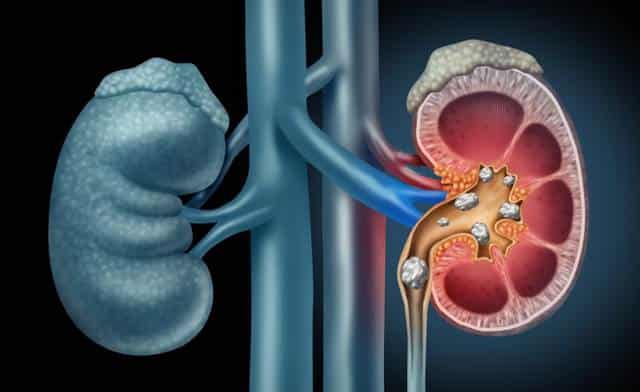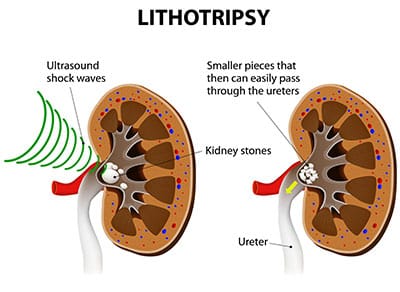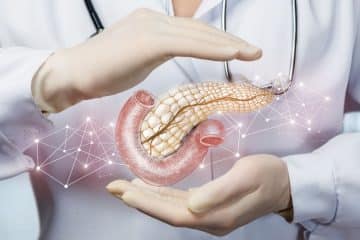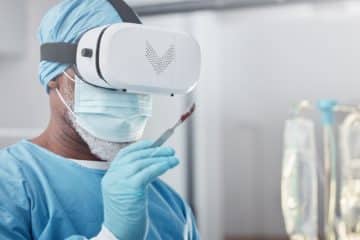Kidney Stones Treatment – Overview
The kidneys are two bean-shaped organs located at the back of the abdominal cavity. The kidney serves a very vital function in filtering the blood and removing waste products of metabolism such as urea, salts from the body leading to the formation of urine.
Urine drains from the kidney through a narrow tube called the ureter into the bladder. When the bladder fills and there is an urge to urinate, the bladder empties to the outside through the urethra, a much wider tube than the ureter. Kidney stones form and they interrupt the normal flow of urine from the body. This calls for kidney stones treatment and their removal.
The schematic representation of the movement of urine from the kidney to the outside of the body is shown below:
Kidney (pelvis) –> Ureter –> Bladder –> Urethra
Kidney stones are hard deposits made of solid mineral salts formed in the kidney.

Kidney stone disease is also known as renal lithiasis and nephrolithiasis and the condition affects between 1% and 15% of people globally at some point in their lives.
Read: Kidney Transplant Facts
Causes of Kidney Stones
Several factors predispose people to develop kidney stones. They include
Dehydration – The main cause of kidney stones is insufficient water in the body. Kidney stone often occurs in people who drink little fluid or loss too much fluid.
Obesity – Another leading risk factor is obesity. Obesity tends to cause kidney stones due to excessive eating and fat in the body.
Diet – The constituents of the diet is another risk factor for kidney stone. High dietary intake of protein, sodium, sugars (honey, fructose, oxalate, apple juice) can result in the formation of stones.
Disease – Kidney stones may also result from diseases that affect the metabolic functions of the body. Examples of such diseases include
- Hyperparathyroidism
- Dents disease
- Medullary Sponge Kidney
- Crohn’s Disease
Genetics – Genetics and family history may play a role in kidney stone disease.
Signs and Symptoms of Kidney Stones Disease
Before you begin your kidney stones treatment plan, it is important to be sure that you are indeed suffering from a kidney stone. The top symptom of kidney stones disease is renal colic. Renal Colic is severe pain in the abdominal region radiating from the flank to the groin.
The condition is often followed by restlessness, sweating, nausea, urinal urgency, and vomiting. It usually comes in waves lasting 20 to 60 minutes as a result of the contractions of the ureter as it attempts to expel the stone.
Diagnosis
If you have the above signs and symptoms there is a high likelihood that you have a kidney stone. You may have diagnostic tests to confirm the suspicion. Blood testing, urine testing, and imaging such as abdominal X-ray or CT scan are some of the diagnostic tools for kidney stone disease.
Prevention of Kidney Stones
Prevention is better than cure. It is recommended to take preventative measures when it comes to kidney stone diseases. The preventive measures depend on the causative agent. Stone is formed from various mineral salts and preventive measures depend on the type of stones.
Dietary Measures
As stated earlier, diet can have a profound influence on the development of stones. The recommended dietary measures to reduce the risk of kidney stone formation include:
- Increasing total fluid intake – The amount of fluid intake daily should be increased to more than two liters per day of urine output. Maintenance of dilute urine using vigorous fluid therapy is beneficial in all forms of nephrolithiasis, so increasing urine volume is a key principle for the prevention of kidney stones. A high fluid intake has been found to reduce the risk of kidney stone disease by about 50%.
- Increasing citric intake – The source of citric include lemon juice and lime juice.
- Moderate Calcium intake – Free calcium in the body binds with oxalate and thereby prevents its absorption into the body. Excessive oxalate in the body tends to form kidney stones. Urologists, therefore, recommend chewing calcium tables during meals containing oxalate foods such chocolate, soy products and leaf vegetables.
- Limiting sodium intake
- Limiting consumption of cola soft drinks containing phosphoric acid
- Limiting animal protein intake
- Limiting large doses of supplemental vitamin C.
Urine Alkalization
Another preventive measure for kidney stones is urine alkalization. As stated earlier, kidney stones form when the urine becomes acidic. Hence, alkalization of urine dissolves kidney stones such as uric acid stone and some other types of stone.
This dissolution of stone is usually achieved through the use of oral medications such as Acetazolamide (Diamox). This medication alkalinizes the urine, therefore, dissolving stones. Increasing the urine pH to about 6.5 provides optimal conditions for the dissolution of uric acid stones.
However, if the urine pH increases to above 7.0, there is a risk of calcium stone formation. It is therefore recommended to test the urine periodically using atrazine paper to ensure the urine pH is at optimal levels.
Diuretics
Diuretics are substances that promote increased production of urine. The increased urine production reduces the risk of stone formation.
Thiazide Diuretics – These drugs inhibit the formation of calcium stones by promoting the absorption of calcium into the body. Examples of thiazide diuretics are chlorthalidone and indapamide.
Treatment of Kidney Stones
Most kidney stones eventually pass through the urinary tract on their own within 48 hours, with ample fluid intake. However, treatment is often required for pain control from kidney stones as they pass.
Pain Management
Management of pain often requires intravenous administration of NSAIDs or opioids. In those with normal kidney function, NSAIDs are the preferred pain medications to opioids or paracetamol. Oral medications are often effective for less severe discomfort.
Medical Expulsive Therapy
This refers to the use of medication to increase the speed of passage of stones in the ureter.
These medications include tamsulosin (alpha-blockers) and nifedipine (calcium channel blockers).
Surgery
There are surgical procedures required in kidney stones treatment. Non-invasive and minimally invasive are the preferred method of treatment of kidney stones.
1. Lithotripsy

lithotripsy
This is a non-invasive medical procedure used to treat some types of kidney stones.
Lithotripsy uses sound waves to break up larger kidney stones into smaller pieces that can easily be expelled by the kidney. The most common type of lithotripsy is extracorporeal shock wave lithotripsy (ESWL).
ESWL involves the use of a lithotripter machine to deliver externally applied, focused, high-intensity pulses of ultrasonic energy to cause fragmentation of a stone over around 30–60 minutes.
Common adverse effects of ESWL include acute trauma, such as bruising at the site of shock administration, and damage to blood vessels of the kidney.
2. Ureteroscopic surgery
Ureteroscopy is an examination of the kidney, usually performed with a ureteroscope that is passed through the urethra and the bladder, and then directly into the ureter; usually, the lower 2/3 of the ureter is accessible by this procedure.
The procedure is useful in the diagnosis and treatment of kidney stones. Smaller stones in the bladder or lower ureter can be removed in one piece, while bigger ones are usually broken before removal during ureteroscopy.
The examination may be performed with either a flexible or a rigid fiber optic device while the patient is under a general anesthetic. The patient is usually free to go home after the treatment.
3. Percutaneous nephrolithotomy
This is another method of kidney stones treatment and it is the surgical removal of kidney stones that may be required in persons with only one functional kidney or in cases where the two kidneys are obstructed by the stones.
The surgical procedure to remove large or complicated stones is known as percutaneous nephrolithotomy. There is the treatment of choice for stones that cannot be extracted using less invasive techniques such as lithotripsy and ureteroscopy
Percutaneous nephrolithotomy (PCNL) is most suitable to remove stones of more than 2cm in size and are near the pelvic region. The procedure is done under general anesthesia or spinal anesthesia.


